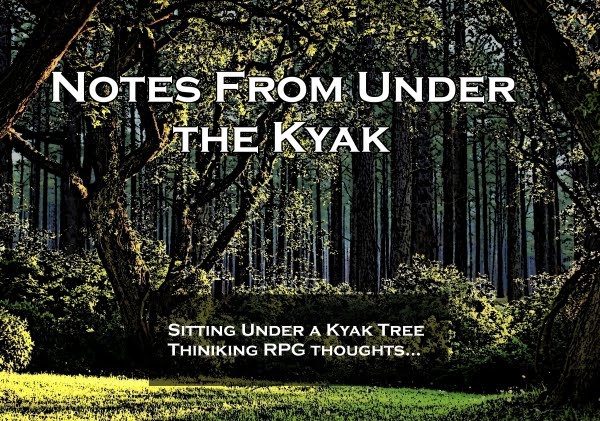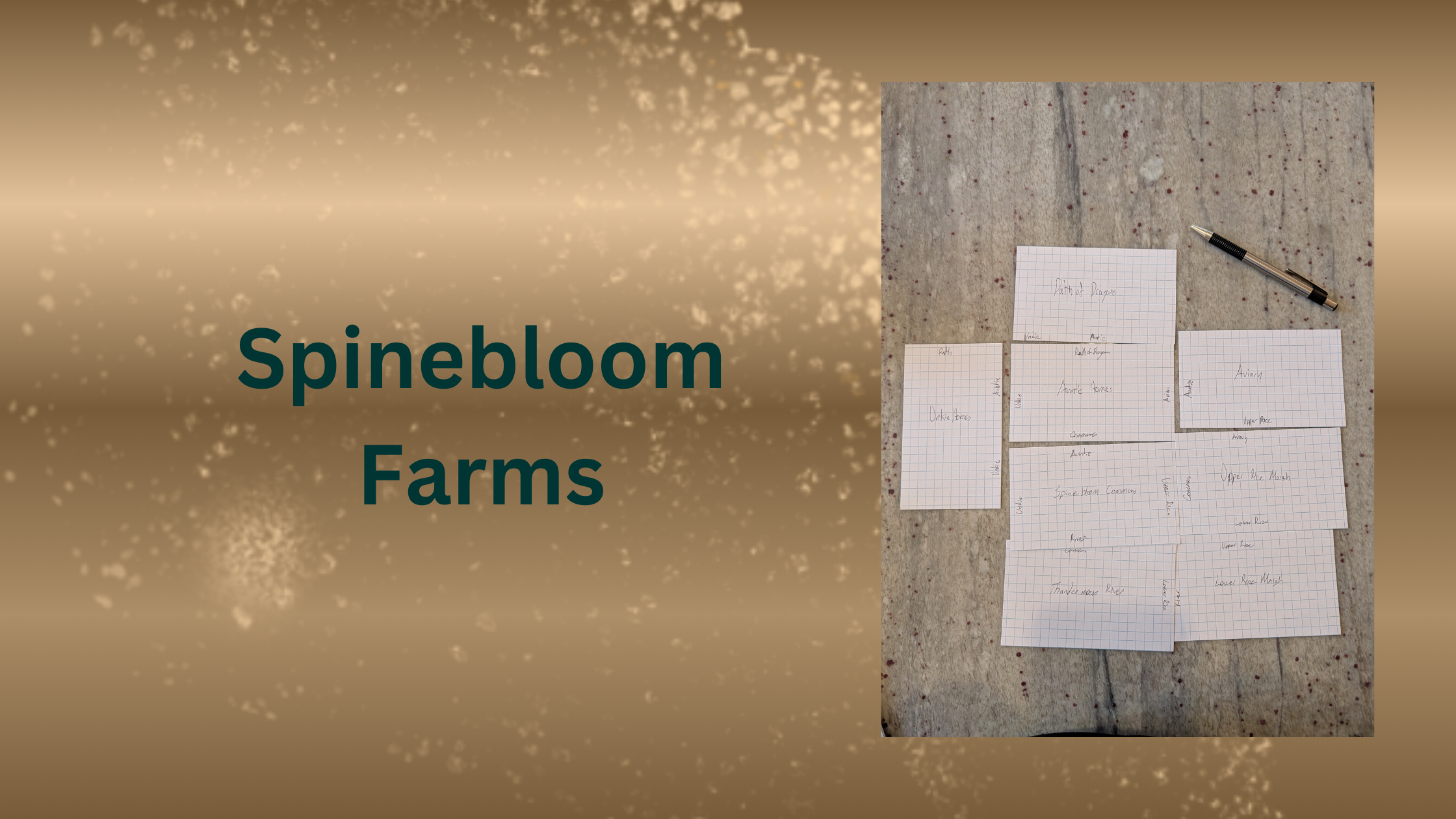
Wyvern Lair
High atop the Devil’s Finger is the Wyvern’s nest. The wyverns used to plague the region, but they stopped suddenly, years ago. The former village druid claimed that he had brought balance to the natural order of things and that the wyvern would no longer be hunting the village sheep and cattle (or the occasional villager). The truth is that the red dragon in the northern mountains awoke from a centuries-long sleep to find human beings once again on his doorstep and has been plotting to destroy them before they discover his presence. The dragon formed an uneasy truce with the wyverns (for the time being) demanding that they not raid the human settlements. The wyverns have sought food among the goblin tribes and the elk herds in the area for the past several years now. However, all that has changed. Last week the dragon sent an envoy to the wyverns and told them to stop preying on the goblins as the master had need for them. The wyverns (not the brightest of the draconic family) took the message to mean the human settlements were again available to them. So they began to steal cattle and sheep.
As the party approaches Devil’s Finger:
Watching from atop the peak is the male wyvern. During the day, PCs have a 9-12 chance of being spotted by this vigilant creature when they enter the hex in which Devil’s Finger is located unless some extreme measures are taken. The area 100’ around the spire is cleared of trees and underbrush, so if the party approaches this area in full daylight, there is a 100% chance of being spotted. If spotted, the male will call to his mate and they will launch from the nesting area and attack. This mated pair is fiercely loyal to one another and extremely aggressive, attacking any creature which comes near to the spire.
The wyverns’ typical approach is to attack the target(s) from different sides, hoping that one or the other can gain the element of surprise. They have been living in this forested area for decades, so they are adept at fighting among the trees (they gain +1 for surprise when attacking PCs in forested areas).
1. The Pit
In the spoor around the base of the spire are ripped and broken bits of armor and destroyed weapons and many bones, primarily goblin and elk. If the party searches the waste, they can find the following (1-6 chance per turn of searching to turn up one item): 10gp in a leather pouch, a ring (gold with a pearl set, magical – ring of haste), a ruby (worth 250gp), a small pile of coins fused together (13gp, 11pp, 19sp, 4cp), a brass ring (worth 1gp). Feeding on the offal are several grey oozes. For each turn spent searching in the waste, the PCs have a 1-6 chance of encountering a grey ooze. There are 3 oozes at the base of the spire.
The Long Climb
Climbing the spire is easy for thieves (who gain a +25% on their climb skill) and can be accomplished by other PCs relatively easily with ropes. CLIMBING RULES?
2. The Lower Fissure
This area, 120’ above the base of the spire, is a crack in the rock wide enough for a normal human or smaller being to enter. The fissure runs about 25’ into the spire and closes up.
A series of small ledges climbs from the base of the spire to this fissure.
These ledges have eroded and are weakened. If 200 pounds is place on one of these ledges, there is a 50% chance (+5% for each 10 pounds above 200 is placed on the ledge) that the ledge will collapse. So if a fighter wearing armor and equipment totaling (with his body weight added) 230+ pounds were to try to cross a ledge there would be a 65% chance of it collapsing. The %age chance remains for any subsequent usage of the particular ledge (that is to say, if the 104 pound mage crosses after the fighter, there is still a 65% chance the ledge will collapse, since the fighter would have worked it loose with his weight). If a ledge collapses, everything (and everyone) on it falls, taking 1d6 hp damage for every 10’ fallen. PCs get a DEX check (with AC bonuses/penalties applied to the roll) to avoid falling. A falling PC hits the ledge below on a 3-6 chance for every 10’ fallen. If the falling PC hits a lower ledge, the damage for the fall is halved and the ledge is 80% likely to collapse under the weight of the falling character (and debris) from above. Falling PCs will continue to crash through ledges until either a ledge holds or they hit the ground.
If either or both of the adult wyverns still lives when the PCs ascend the spire, they will gather the hatchlings and attack the PCs as they climb. If neither adult lives, the hatchlings remain in their nest (room 4) until the PCs enter the chamber.
3. Galltrit Lair
As the party passes this point, they might notice (as detect secret door) a small, well worn hole in the stone. The opening would be hardly big enough for a man to put his arm into it.
This is a lair of four Galltrits. These tiny creatures come out primarily at night to feed on the offal and carrion around the Spire. During the day there is an 80% chance that they will be asleep, though very loud noises (like crashing ledges, for example) will certainly wake them. The Galltrits’ lair is a 9”x6” crevice that opens into a somewhat larger space in the rock (PCs can reach in and feel around, if they want). In the lair are a Gem of Seeing and a 50gp aquamarine. Also in the lair are a ten tiny splinters of wood coated with a mild poison (save vs. poison or become dizzy and pass out for 1-6 rounds). PCs groping around inside the lair make a DEX check at to see if they hit anything. If they do, roll d12 and see what they hit:
1. Gem of Seeing
2.-11. Poison splinter
12. Aquamarine (worth 50gp).
GALLTRIT (4): AC 2; MV 30'/180’; MC: B; HD ¼ ; hp 2; THAC0 20; #AT 1; D 1-2; SA Drain blood, anti-coaguant, anaesthesis; SZ S; Int Avg; AL CE; XP 32. (FF)
4. Hatchlings’ nest.
HATCHLING (4): AC 6; MV 40’/120’; HD 5+2; hp 12, 15, 19, 26; THACO15; #AT 2; D 1-6/1-2; SA Poison; SZ M; Int Low; AL NE; XP 575+5/hp.
These four hatchlings are about half the size of their parents. Their sting does only 1-2 points of damage and their poison induces unconsciousness (2d4 turns) not death (though the hatchlings will begin to devour any unconscious victims, inflicting 1-6 hp/round for each hatchling feasting on a particular victim).
In the jumble of bones, offal and various other bits of junk can be found (1-6 per turn of searching) 2 small sapphires (100gp each) and various coins (1-4 of a random type found in any given turn, 2-20 of each type available).
5. Wyvern’s nest.
The wyverns have built their nest here in this cave, separated from the hatchlings but able to watch over them in case of a threat. The female wyvern is here 80% of the time (always in the daytime, she hunts occasionally at night) and is asleep 50% of the time. She is guarding a clutch of eggs.
WYVERN (2): AC 3; MV 60’/240’; MC: E; HD 7+7; hp 34 (male) 49 (female); THAC0 13; #AT 2; D 2-16/2-16; SA Poison; SZ L; Int Low; AL NE; XP 925+10/hp (MM)
5a. Fetid pool.
This small pool is the wyverns’ water supply. The water collects here from rain. Presently there are bits of three goblin bodies rotting in the water. PCs who drink the water must make a save vs. poison or suffer an intestinal infection. (cure disease or suffer incapacitation for 36 hours – onset in 2d10x10 minutes from first drinking the water). In the center of the pool is a ring (cursed Ring of Clumsiness.)
5b. Trophy room.
Wyverns are not very intelligent, but these creatures recognize that some things are more valuable than others and keep their prize possessions in this chamber. Included here are: a young red dragon skull (actually one of the offspring of the dragon to the north who attacked wyverns some time ago), a shield that has been polished to the finish of a silver mirror, a dwarven corpse in full armor (mostly skeletal remains – wearing dwarf-sized chain +1, a great helm, sturdy boots, a dagger and an axe), four long crystals (hexagonal, six-inches in diameter, 1d6+2 feet long each), a set of windchimes is also hanging from an outcropping stone.
THE FOLLOWING AREAS MIGHT OR MIGHT NOT GET ADDED TO THIS AREA...
6. Ancient Upper Ruins.
7. Fallen Temple of the Goblin God (not on map)
8.















































































.jpg)



























.png)












.jpg)





























































































































.JPG)






















No comments:
Post a Comment